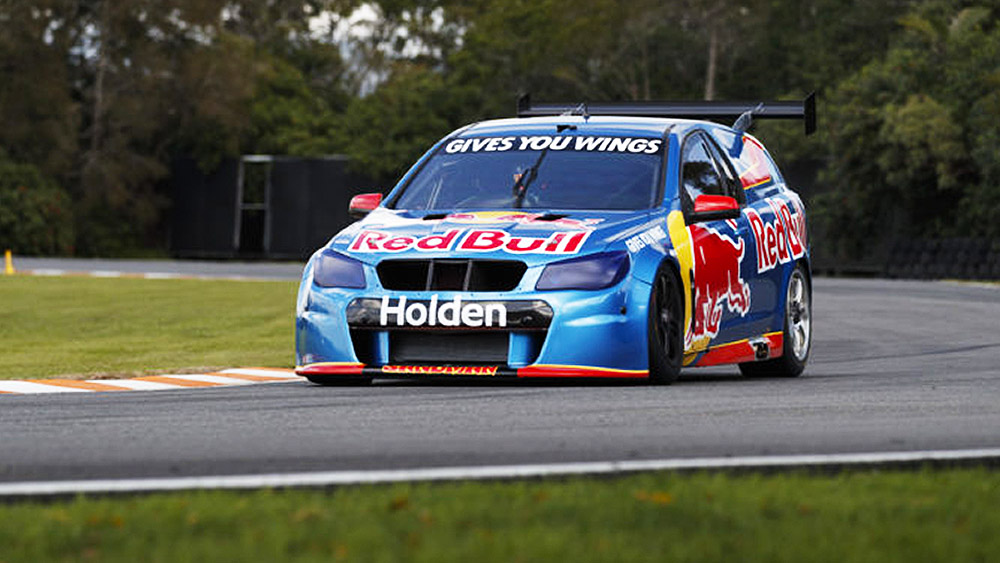
Stop. Collaborate and LISTEN. As the soundscape of motorsport is changing at a rate our ears can barely keep up. Especially now it’s hit the Land Down Under. Specifically, the V8 Supercar series. Gulp.
This year saw the introduction of ‘Gen 2’ regulations into the brilliantly brash and old-school Aussie V8 Supercar series. It’s a set of rules that shakes up what’s allowed on the grid: two-door coupé body styles and turbocharged four- or six-cylinder engines are now in play. The cars are still required to be based on front-engined, rear-wheel drive, four-seater production cars that are sold in Australia, but as yet, no one has started racing them.
But they’re coming next year, and teams have already started testing the new twin-turbo V6 engines. Something that will have the purists crying themselves to sleep.
Last week, Holden took the first step into the brave new world as The Red Bull Holden Racing Team tested a turbocharged GM V6 used in GT3-spec Cadillacs at a private shakedown test at Queensland’s Norwell Motorplex.
Craig Lowndes, Jamie Whincup and Steven Richards, drove a promotional car (hence it being an estate with a giant wing at the back) for two days and over 256km with two fewer cylinders than normal and reported it exceeded initial expectations.
“We are very happy with the initial running, GM Racing has given us a great base to work from,” Red Bull Racing boss Roland Dane said in a statement.
“The test has been about getting kilometres on the engine and understanding what it needs at this point to prepare it for racing in Supercars.”
But what does the 3.6-litre General Motors twin turbo V6 sound like? Well, it’s definitely not a V8, but does its best impression as there are no real turbo hallmarks to hear of. Which is impressive. But also quite sad as we miss the nutjob fury of a good ol’ 5.0-litre V8. And we’ve heard the team is trialling several types of exhaust to try and extract the best possible note from the new, smaller blown engine for its roll-out as a wildcard at selected events next year.
Arguably, it was F1 that brought the whistle-y, whoomps and chunters of smaller capacity, more efficient engines into frame. When it dropped the high-revving V8 (from the V10, which was a replacement for V12) to introduce lower-revving, turbocharged V6s people threw their arms up in outrage. But there are some efficient race cars that sound good. Like Toyota’s hybrid Le Mans car, which sounds like a dubstep remix of a lightsaber charging up.
Is the death of the V8 the end as we know it? Don’t get too upset, mind. It could be worse. It could sound like Formula E.
